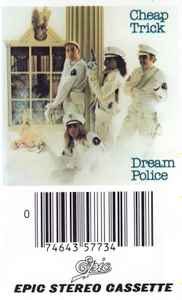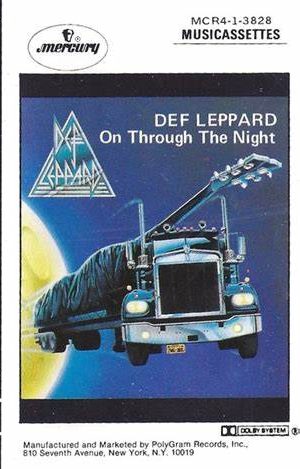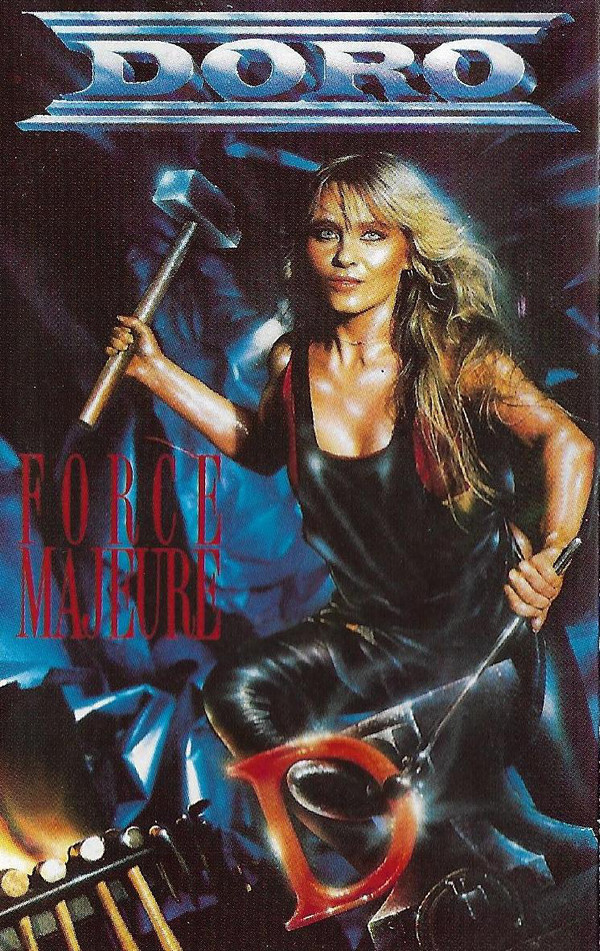By JAY ROBERTS
The Cassette Chronicles is a continuing series of mini reviews and reflections on albums from the 1980’s and 1990’s. The aim of this series is to highlight both known and under-appreciated albums from rock, pop and metal genres from this time period through the cassette editions of their releases. Some of the albums I have known about and loved for years, while others are new to me and were music I’ve always wanted to hear. There will be some review analysis and my own personal stories about my connection with various albums. These opinions are strictly my own and do not reflect the views of anyone else at Limelight Magazine.
MR. MISTER – WELCOME TO THE REAL WORLD (1985)
The first Mr. Mister album I Wear The Face didn’t exactly set the world on fire in terms of commercial success. So when the band’s second album, Welcome to the Real World, I’m not sure that anyone saw the success that was about to find the band.
That said, other than hearing the band’s three singles from the album, I’d never listened to this album in full before now. Maybe that’s why I was surprised to see that those three singles that made such a big impact on the charts were on the second side of the album. From what I remember of the pop albums I bought back in the day, at least one of the hit singles always seemed to be on Side One.
That’s okay though, it gave me time to really dig into the first side of the album with those five songs I’d never heard before now. And while I’m way more of a hard rock and heavy metal aficionado, I have to say that I was rather strongly surprised or maybe I should say impressed with the first side of this album.
Things kick off with the song “Black/White” the first of three straight higher tempo tracks. The vocals from Richard Page are strong throughout the album but what really caught my ear on this particular track was the guitar playing from Steve Farris. There was some delicious moments of fretwork and I was sold on the song pretty quickly.
The track “Uniform of Youth” moves at the same faster pace but instead of the guitar, I thought the keyboards were the fuel that powered the song here. Meanwhile, “Don’t Slow Down” had a lively pace to it but it did have a bit more of a slowdown than the first two songs. I really liked the way this song was constructed. It had the kind of cinematic tone to it that would make you think it would work perfectly on a soundtrack for some kind of movie or TV show that had a road trip as the key part of the plot.
I will say that I found the song “Run To Her” rather annoying. It is a ballad track but the sleepy and meandering way the track was performed had me wishing it would end sooner rather than later.
I may not have liked that song but the first side bounced back with the closing number “Into My Own Hands”, which ranged from mid-to-uptempo in terms of delivery.
I heard one of the band’s singles on the radio station I listen to at work and that prompted me to write this piece. I remember listening to the songs on American Top 40 (and likely during regular airplay on 92 Pro-FM out of Rhode Island as well). I always liked the two singles I remembered most and whenever I hear them on the radio now, I find myself either humming or singing (badly) along to the songs.
But as I flipped the album over to Side Two, I was struck by the fact that until I got to the chorus of “Is This Love”, I didn’t really remember the song at all. Considering it went to #8 on the singles chart, it is kind of amusing to me that I had such a moment of forgetfulness. As I listened to it for this article I got to rediscover those main lyrical passages that led to the song’s chorus. I found myself enjoying the song anew.
It is at this point in researching things for the article that I discovered something I had never known before. According to Wikipedia, all the songs that appear on Welcome to the Real World appear to feature lyrics written by John Lang. Who’s he? Well, he’s not a member of the band. I had to do a further search to learn that he’s apparently the cousin of singer/bassist Richard Page (assuming the Internet is accurate). I’m not quite sure if he wrote all of the lyrics but he gets co-writing credits on each song so it seems likely.
After “Is This Love”, the band’s two most successful songs follow in quick succession. Both “Kyrie” and “Broken Wings” hit #1 on the singles chart and even now I can understand why. They are just fantastic songs that really capture your ear even now. I vaguely remember that the song had a religious connotation from back when the song was first released but it wasn’t until now that I looked it up and learned that singer Richard Page said the song is essentially a prayer. Funny that. I mean, since I have no use for religion and yet “Kyrie” remains one of the better remembered 80’s pop songs in my mind.
As for “Broken Wings”, man that is still a powerfully addicting song here in 2024. While the song does have a tendency towards an uptempo pace, it’s like someone is riding the brake at the same time as it never quite spills over into a full on highly energetic number. That’s okay though because the song came out about as perfectly as you could’ve hoped for.
The album closes out with the songs “Tangent Tears” and the album’s title track. Both have a livelier than usual performance to hear. While there’s nothing really wrong with either track, I can’t say that they made too much of an impression on me though. Definitely album tracks for me as opposed to wishing they’d been singles or anything.
Before I started off my fandom for rock and metal, I was definitely a pop music fan. I loved a lot of those 1980s pop bands and Mr. Mister was one of them. And while it has taken nearly four decades for me to listen to the album in full, I would have to say that Welcome to the Real World was well worth checking out. It’s got some great music throughout the album and it will remind pop music fans of just how good they had it back in the early to mid-1980s.
NOTES OF INTEREST: Welcome to the Real World went platinum in the US and triple platinum in Canada. The album got a reissued edition in 2015 with an additional six bonus tracks made up of live cuts, different mixes and extended editions. The album hit #1 on the charts.
Singer Richard Page turned down offers to join both Toto and Chicago after the band’s first album was released. Guitarist Steve Farris left the band in 1988.
Mr. Mister’s fourth and final album was called Pull. It was originally recorded in 1990 but the label didn’t release it and the band broke up shortly thereafter. It was finally released in 2010.










